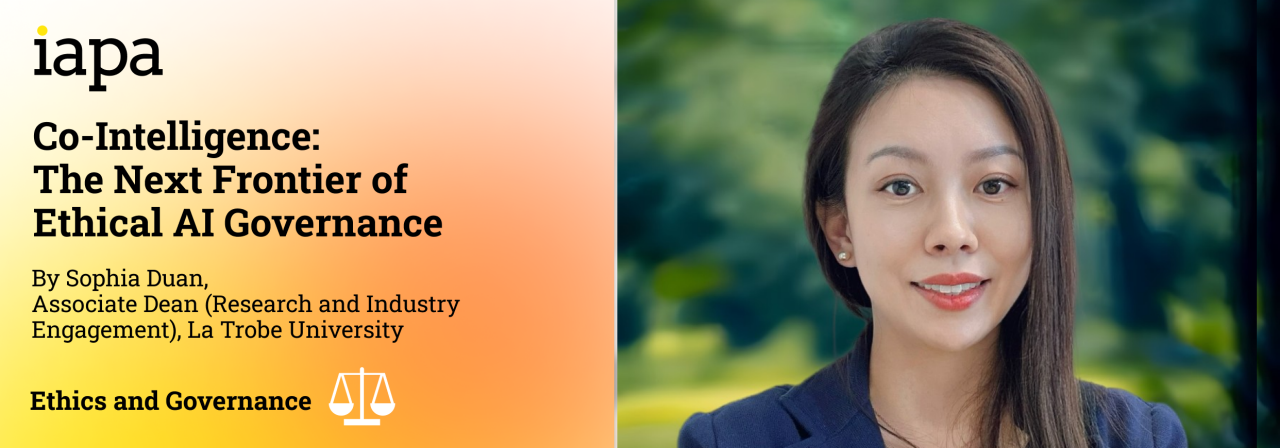
Co-Intelligence: The Next Frontier of Ethical AI Governance
By Sophia Duan, Associate Dean (Research and Industry Engagement), La Trobe University
In the world of data analytics, you often find yourself balancing the needs of the stakeholder with the reality of what the data reveals. We’re tasked with telling stories from numbers, bringing insights to life, and informing critical decisions. But what happens when the story isn’t what the stakeholder wants? What happens when the pressure to "tell a better story", outweighs the responsibility to tell the truth?
How many times have you heard a stakeholder ask, “Can we cut the data a different way?” The tone is usually casual. The intent might not be harmful. But the implications can run deep.
The future of AI is not artificial. It is deeply human, built on collaboration, governed by trust, and sustained by shared responsibility.
AI is no longer just a tool we program. It is becoming an intelligent collaborator that helps co create ideas, improve business decisions, and transform how organisations learn and act. We are entering the era of co-intelligence, where human insight and machine intelligence intersect. This evolution raises a new governance challenge. The question is no longer “Can AI do this?” but “Should it, and who decides?”
AI governance is evolving just as quickly as the technology itself. What began as a reactive response to risk and regulation is now shifting toward capability and confidence. Forward-looking organisations are asking not only how to comply, but how to design systems that learn responsibly, act transparently, and share accountability before they go live. Governance is moving from being a safety net after the fact to a framework that enables trust, innovation, and long-term value.
As co-intelligent systems move deeper into recruitment, finance, education, healthcare, and public policy, we cannot afford governance that only looks backward. We need governance that is reflexive, able to learn, adapt, and evolve with the technology and its users. This requires moving beyond ethics checklists toward a culture of ethical design, embedding cues, constraints, and feedback loops that encourage human reflection instead of automating it away.
Ethical governance recognises that values like fairness, privacy, and accountability are not fixed settings that can be coded once and forgotten. They are living principles that must be continually interpreted, debated, and enacted across people, processes, and platforms. In the same way that AI learns from data, organisations must learn from experience.
From responsible AI to ethical co-intelligence
Traditional responsible AI frameworks have focused on minimising harm. That remains essential, but co-intelligence asks us to aim higher. The real opportunity lies in using AI to enhance human reasoning and ethical capacity.
AI can flag bias in hiring, but only if managers are empowered to interpret those signals and act on them. AI tutors can personalise learning, but teachers must retain authority to decide how those recommendations align with the needs of individual students. AI can predict social or environmental risks, but it should also make those predictions transparent so that leaders can weigh trade-offs and consequences.
In other words, AI should not make the final call. It should strengthen our ability to make better ones.
To achieve this, governance must evolve in three key ways:
1. From rules to relationships
Accountability cannot sit in a single division or document. It must be shared across designers, users, leaders, regulators, and citizens. Good governance builds visibility and dialogue between these groups, creating a system of mutual learning and trust.
2. From audit to adaptation
Just as AI models are retrained with new data, ethical oversight must evolve with new insights. Scenario testing, stakeholder reviews, and post implementation reflection should be built into every lifecycle. Governance that learns as fast as technology does is the only way to maintain public confidence.
3. From control to coordination
The goal is not to restrict AI but to align human and machine capabilities toward shared outcomes. This requires transparency about how decisions are made, traceability in how data flows, and clarity around who holds final responsibility.
When viewed this way, governance is not a brake on innovation but an accelerator. Organisations that establish ethical boundaries early gain the freedom to innovate with confidence. They attract investors, partners, and employees who trust their systems. They reduce risk while creating room for creativity.
In my collaborative projects with industry partners, I have seen firsthand how ethical governance becomes a catalyst for innovation. When people understand what good looks like, they take bolder but smarter risks within clear ethical parameters. Clarity enables courage. Ethical design is not a cost. It is a competitive advantage.
The same logic applies to analytics professionals who are designing and deploying AI tools every day. Ethics should not be seen as a compliance burden but as a strategic capability. An analytics team that can explain how its model aligns with fairness, privacy, or inclusion principles is a team that earns long term trust from clients and executives. Trust is the currency that sustains innovation.
Australia’s opportunity
Australia has a unique opportunity to lead in this space. Our combination of diverse industries, strong research capacity, and collaborative culture provides fertile ground for building global best practice in ethical AI governance. But leadership will depend on coordination between universities, business, and government. We need frameworks that are not only principled and rigorous but also practical, scalable, and aligned with real business priorities.
That means designing governance models that help organisations innovate responsibly, not slow them down. It means equipping analytics professionals with the literacy to identify ethical risks early. It means embedding accountability into decision workflows, rather than treating it as an afterthought.
The conversation must move from AI control to AI coordination. The future will not be about keeping AI in check but about designing systems where humans and machines work together to achieve shared ethical outcomes. These outcomes might include reducing carbon emissions, improving public safety, increasing accessibility, or enhancing wellbeing and inclusion. In every case, the focus is the same: keeping human values at the centre of technological progress.
As AI becomes more capable, the temptation will grow to delegate more judgement to algorithms. Yet empathy, moral reasoning, and contextual awareness remain uniquely human. The purpose of co‑intelligence is not to replace human agency but to amplify it.
If designed and governed well, AI can extend our cognitive reach, helping us make decisions that are not only smarter but also fairer and more humane. The real question is not whether we can build more intelligent machines, but whether we can build systems that make humans more intelligent about their use.
The future of AI is not artificial. It is deeply human, built on collaboration, governed by trust, and sustained by shared responsibility.
About the author
Sophia Duan is Associate Professor and Associate Dean (Research and Industry Engagement) at La Trobe University. Named one of Australia’s Top 25 Analytics Leaders, she is a thought leader in responsible and human-centred AI and digital transformation, helping organisations innovate ethically and build lasting trust in an AI-driven future.
